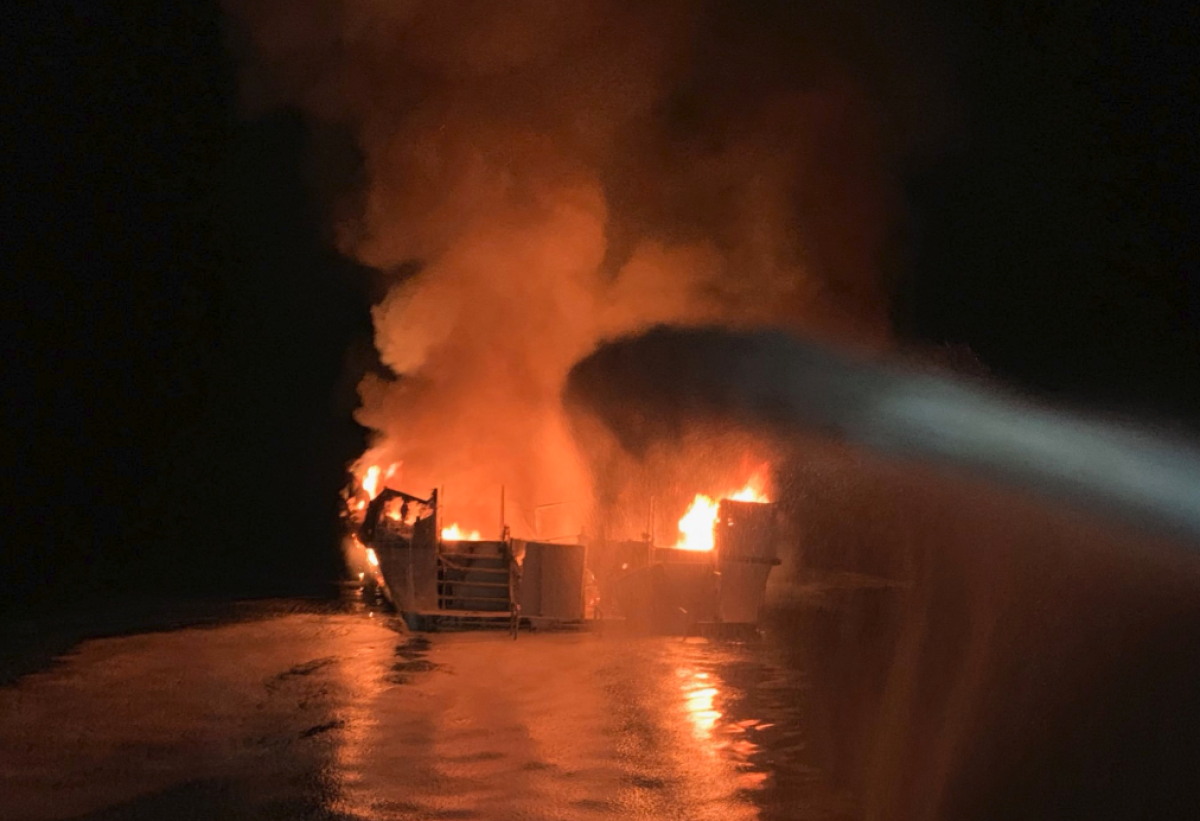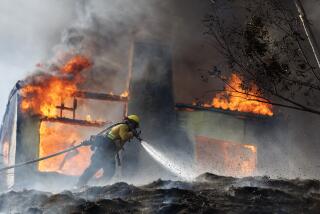Sweeping safety rules proposed in wake of Conception boat fire that killed 34 people

- Share via
California Sen. Dianne Feinstein and Reps. Salud Carbajal and Julia Brownley on Thursday proposed sweeping boat safety legislation in the wake of the Conception dive boat fire that killed 34 people on Labor Day.
The legislation would require small passenger vessels to have at least two escape exits, strengthen standards for fire alarm systems and create mandatory safety rules for the handling and storage of phones, cameras and other electronic devices with lithium-ion batteries.
The proposal comes amid growing scrutiny over how the Coast Guard has regulated passenger vessels. A Times review of Coast Guard records over 20 years found the agency repeatedly rejected some recommendations by the National Transportation Safety Board for tougher safety rules.
The documents showed that after investigating earlier boat fires, the NTSB called on the Coast Guard to require small vessels to establish procedures for conducting regular inspections and reporting maintenance and repair needs for all of a boat’s systems. But the Coast Guard rejected those calls, calling them “unnecessarily burdensome and a duplication of existing requirements.”
The Coast Guard declined to comment Thursday, citing the pending legislation.
Carbajal (D-Santa Barbara) said too many people have died in accidents but the Coast Guard has not adopted safety recommendations issued by the NTSB. He said he is hopeful the proposal will garner support across party lines and not become bogged down in the bureaucratic process.
“Action needs to be taken, as the Coast Guard, time and time again, has not been diligent enough to protect the public,” Carbajal told The Times in an interview. “This is a public safety issue.”
Glen Fritzler, owner of Truth Aquatics, which operated the Conception and other dive boats, said of the proposal: “It sounds like a good idea to me.” He declined to comment further, but has previously said his crew did everything possible to try to save the passengers.
The cause of the Conception fire is still under investigation. Authorities have said they believe the passengers were trapped below deck when the fire broke out. The NTSB has raised concerns about the functionality of the two exits in the area where passengers slept in stacked bunks beneath the waterline.
The agency declined to comment Thursday, citing its ongoing investigation. NTSB investigator Jennifer Homendy said in September that she was “taken aback” by the small size of the emergency escape hatches, adding that she thought it would be difficult for passengers to exit during an emergency in the dark.
John McDevitt, a former assistant fire chief in Pennsylvania and chair of National Fire Protection Assn. committee on commercial and pleasure boats, said he was glad the proposal addresses additional safety hatches and interconnected smoke detectors.
“Even when you get to the bottom of what the source of the fire was, you still have to assume you are going to have fires on boats, so egress and detection are key,” he said. “Fire detection is the key, and interconnected smoke detectors are the best way to ensure lives are saved.”
The Times reported last month that the Conception was one of about 325 small passenger vessels built before 1996 and given special exemptions from safety standards that the Coast Guard imposed on new vessels, some of which required larger escape hatches and illuminated exit signs.
But after the Times article was published, officials said they would reconsider some of the rejected safety recommendations.
The bill calls for fire extinguishers throughout the vessel in areas passengers have access to, along with interconnected fire detection that would go off throughout the vessel when one smoke detector is triggered. The two means of escape would be required to exist in such a way that if one was cut off the other would still provide passengers a way out.
The legislation also would require standards for marine firefighting training programs and require an outside contractor to sign off on a crew’s firefighting proficiency. It would extend to small passenger vessels a requirement for safety management systems that are currently part of the rules governing larger vessels that require regular documented maintenance practices.
Alex Brodie, fleet manager for Island Packers in Ventura County, said the proposed legislation would likely create safer vessels for passengers.
“It sounds like a common-sense safety measure considering everything that has happened,” said Brodie, who manages the firm’s four vessels. “Airplanes have similar rules. It would be easy for us to comply.”
In September, a fire broke out on the Conception during a weekend diving excursion in the Channel Islands, killing everyone who had been sleeping below deck. Since the accident, investigators have cited some of the same deficiencies pointed out by the NTSB in other boat fires: lack of crew training and inadequate safety measures and maintenance.
A preliminary NTSB investigation found that the Conception had violated a requirement that it have a roving watch during the night, saying the five crew members who survived awoke to discover the flames.
The full NTSB investigation into the disaster could take 18 months to complete. Agents from the FBI and the Bureau of Alcohol, Tobacco, Firearms and Explosives are trying to determine what sparked the blaze.
“The Conception boat fire was a tragedy that could have been prevented had stronger safety measures been in place. We can’t allow this to happen again,” Feinstein said in a statement. “We must ensure that small passenger vessels have the right safety measures in place to prevent disasters at sea.”
One goal of the legislation is to better protect boats that the Coast Guard didn’t require to follow newer safety rules.
“It is abundantly clear that Congress must take immediate action to address safety hazards on older boats, which were grandfathered in and exempted from newer safety rules,” Brownley (D-Westlake Village) said in a statement.
More to Read
Sign up for Essential California
The most important California stories and recommendations in your inbox every morning.
You may occasionally receive promotional content from the Los Angeles Times.











